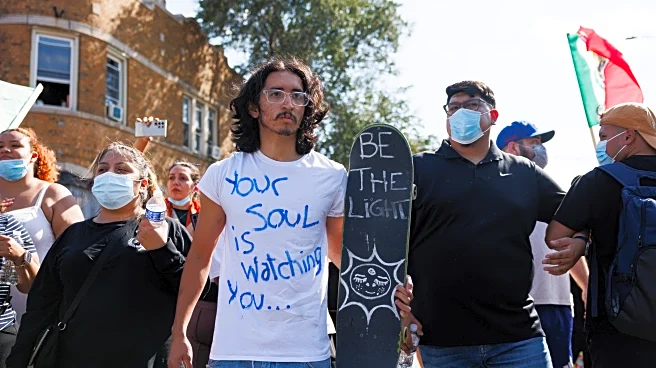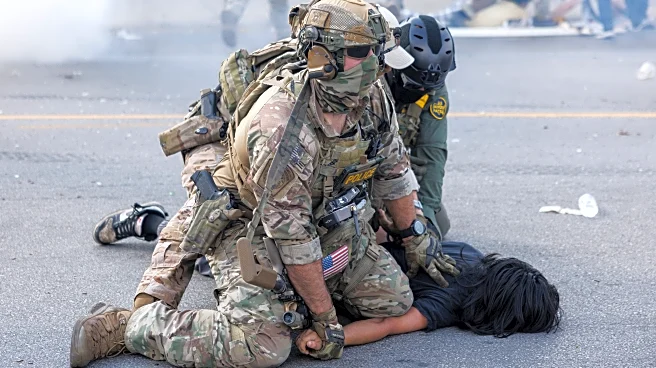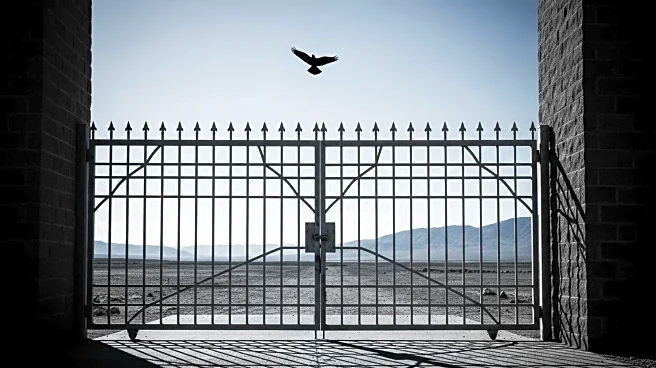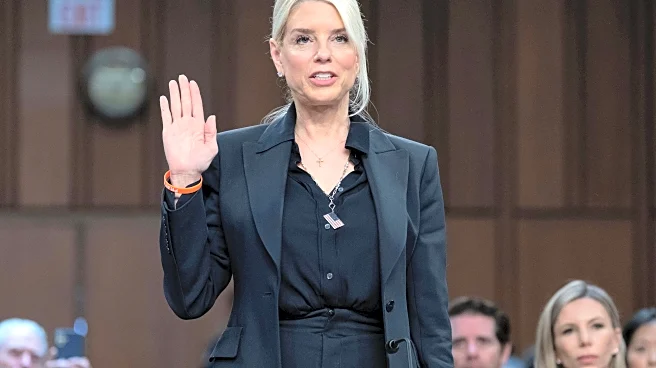What's Happening?
The Department of Homeland Security (DHS) has been producing and distributing videos that resemble military action films, featuring federal agents in tactical gear during operations in cities like Chicago. These videos are part of a recruitment strategy aimed at attracting new personnel to Immigration and Customs Enforcement (ICE), which is currently expanding its workforce. The videos, which include dramatic music and helmet camera footage, have been criticized for appearing more like campaign material than traditional law enforcement documentation. Critics argue that these videos are designed to instill fear in communities and potentially serve political purposes. The DHS has also engaged in social media campaigns, using popular songs and influencers to promote its activities, which has sparked controversy and debate over the appropriateness and impact of such content.
Why It's Important?
The use of militaristic videos by DHS highlights the agency's approach to immigration enforcement and recruitment, which may have significant implications for public perception and policy. By adopting a cinematic style, DHS aims to attract a specific demographic to its ranks, potentially influencing the type of individuals who join ICE. This strategy also raises concerns about the militarization of domestic law enforcement and its impact on communities, particularly those with high immigrant populations. The portrayal of immigration enforcement in such a manner could exacerbate tensions and fears among immigrant communities, affecting their relationship with law enforcement and their sense of security. Additionally, the political undertones of these videos may influence public opinion and policy debates surrounding immigration and border security.
What's Next?
The continued production and dissemination of these videos by DHS may lead to further scrutiny and debate over the agency's methods and objectives. Stakeholders, including political leaders, civil rights organizations, and community groups, may respond with calls for transparency and accountability in DHS operations. There could be increased pressure on the agency to justify its use of such media and to address concerns about the potential impact on communities and individuals. As DHS continues to expand its workforce, the agency may face challenges in balancing recruitment goals with public relations and ethical considerations. The broader implications for immigration policy and enforcement practices may also be a topic of discussion among policymakers and advocacy groups.
Beyond the Headlines
The use of militaristic videos by DHS raises ethical questions about the portrayal of law enforcement activities and the potential consequences for affected communities. The cinematic style of these videos may contribute to the normalization of aggressive enforcement tactics and the militarization of domestic policing. This approach could have long-term cultural implications, shaping public attitudes towards immigration and law enforcement. The intersection of media, politics, and law enforcement in this context highlights the complex dynamics at play in shaping public perception and policy. As DHS continues to leverage media for recruitment and messaging, the agency may need to navigate the ethical and cultural dimensions of its communication strategies.











